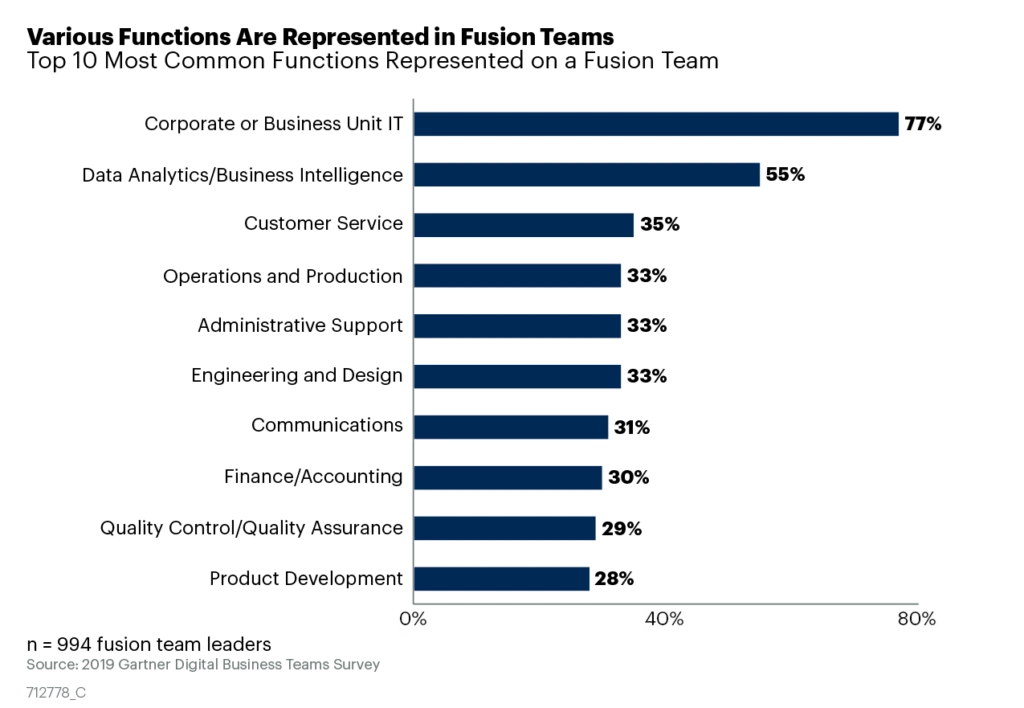
Microsoft Power Platform is the best way for teams to build together
Many organizations are embracing fusion development to build better applications faster by bringing together professional developers with citizen, or low-code, developers and IT professionals. With Microsoft cloud, fusion teams can collaborate on low-code solutions using Microsoft Power Platform to create apps, flows, and bots—which has shown to deliver up to twice the reach of apps built by single individuals.
Today at Microsoft Build, we are announcing a variety of new tools and capabilities to help fusion development teams build low-code apps, automations, and bots faster and at scale, including:
- A new Fusion development learning path and e-book, plus new developer plans for Power Apps and Microsoft Power Platform.
- Command Line Interface (CLI) support for source code files and packaging.
- Native Microsoft Power Platform Visual Studio and Visual Studio Code integrations.
- A new Visual Code extension for Power Apps portals development.
- An application lifecycle management (ALM) accelerator for all makers and developers.
- A new Independent Publisher connector certification.
- Add custom code to your custom connector.
All these new features mean developers can easily participate in fusion teams while staying in their development tools of choice.
Fusion Teams, by the numbers
Fusion development teams are defined as “cross-functional teams that use data and technology to achieve business outcomes.” In recent findings by Gartner, “Already, 84 percent of companies and 59 percent of government entities house at least one such team. At least 74 percent of organizations in transportation, financial services, and manufacturing—industries that are traditionally subject to heavy regulation—have fusion teams. 85 percent of large enterprises have fusion teams, compared to 66 percent of midsize enterprises.”
This graphic was published by Gartner, Inc. as part of a larger research document and should be evaluated in the context of the entire document. The Gartner document is available by accessing your Gartner account here. Gartner, Fusion Teams by the Numbers: An Empirical Analysis of Digital Business Teams, Peer & Practitioner Research, 24 January 2020.
Our journey for all developers
We started our fusion team development journey by supporting our customers with new integrations for low-code application development for pro developers at Microsoft Build in 2019 and continued to deliver capabilities to help you better achieve your app development goals at Microsoft Ignite last year. Today at Microsoft Build we’re going even further to bring teams together to build apps and experiences faster and at scale.
To support organizations that want to deliver low-code apps, automations, and bots faster and more effectively, we’re announcing new features for fusion teams. We’re making it easier for them to build Microsoft Power Platform solutions with native Microsoft Power Platform Visual Studio and Visual Studio Code integrations, Command Line Interface (CLI) support for source code files and packaging, an application lifecycle management (ALM) accelerator for all makers and developers, and new Independent Publisher connector certification. All these new features mean developers can easily participate in fusion teams while staying in their development tools of choice.
Learning together to bring value more quickly
Learning and gaining new skills are critical components of effective team delivery. To support those wanting to learn in-depth, we’re announcing new ways for developers to engage with their citizen developer counterparts through our new Fusion development learning path and the associated Fusion development e-book. For developers seeking new ways to build and test with low code we’re introducing a new Power Apps developer plan, and a new Microsoft Power Platform developer plan to learn and build as a Microsoft 365 developer. For those wanting to go deep with an industry lens on learning, check out our blog for a deep dive on how to use the One Microsoft Cloud to deliver results for your organizations in record time. Together, these resources will allow you to deliver low code solutions in your business more quickly and effectively saving valuable time and costly resources.
New features coming to preview in June that support fusion teams
Microsoft Power Platform Command Line interface support for packages and canvas source files
As part of the fusion theme, we now provide developers with the ability to render canvas apps in a source-code-friendly format. The benefit of this capability is to enable canvas applications to take advantage of enterprise CI/CD pipelines for deployment and enhance the collaboration between citizens and code-first developers. For example, when resolving Power Fx functions, a citizen developer referencing a complicated regular expression for rounding updates in their canvas app, can collaborate with a pro developer to fix the function in the developer’s primary tool. The citizen developer can then continue with their application development work using the fixed regular expression by the pro developer.


Traditional rendition of Canvas App in Source control system (Top) issuing the unpack command (Bottom).

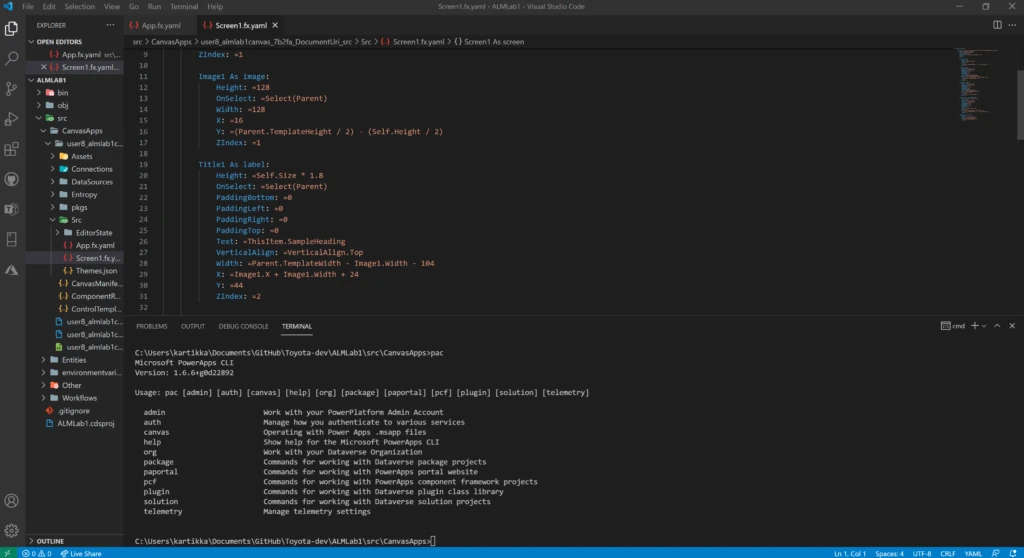
Source code rendition of a canvas app (Top) authoring PowerFx in VSCode (Bottom).
In addition, the Microsoft Power Platform CLI now also simplifies the package deployment process for Microsoft Power Platform developers and independent software vendors (ISVs). In the past, this process required several other command-line tools just to deploy a package into an environment. Now the Microsoft Power Platform CLI has a simple new sub command called package. Within the package sub command, developers can now initialize a package with a template, add package references to solutions, and build and deploy without manual procedures. Try out the new Microsoft Power Platform CLI in June when it becomes available and give us feedback.
Microsoft Power Platform tools for Visual Studio Code and Visual Studio
Bringing Microsoft Power Platform capabilities natively within Visual Studio Code has long been an ask of DevOps engineers and pro developers. We have been actively working on simplifying the myriad of tools required to develop, pack, and deploy code first components to Microsoft Power Platform. Microsoft Power Platform CLI was the first iteration of this, and we are now bringing similar capabilities directly into the code first experience for developers in Visual Studio Code. The Visual Studio Code extension will be available across different Operating System platforms like Windows and Mac OS, as we continue to bring consistent experiences across platforms. Try the new Visual Studio Code extension preview on Windows in June when it releases and give us feedback.
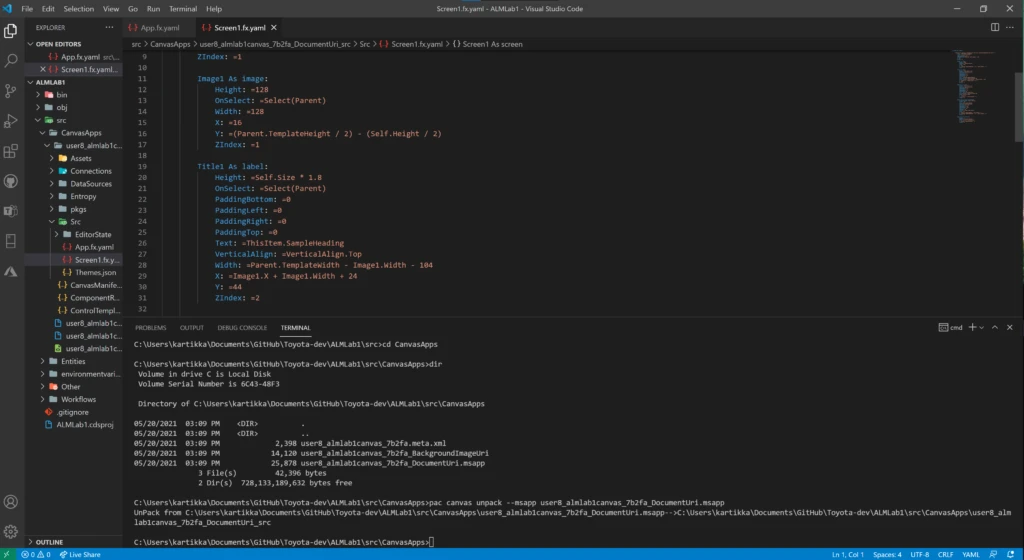
In addition to the Visual Studio Code capabilities, the Visual Studio team has been actively working on improving the application programming interface (API) publishing experience for developers. In the past, developers building APIs would have to go outside of their developer environment, after publishing their API to Azure, to register their API in Azure API Management. We have now made improvements to simplify the process and provide the ability to publish the API and register in API Management from Visual Studio directly. This feature will be available for preview in June as well.
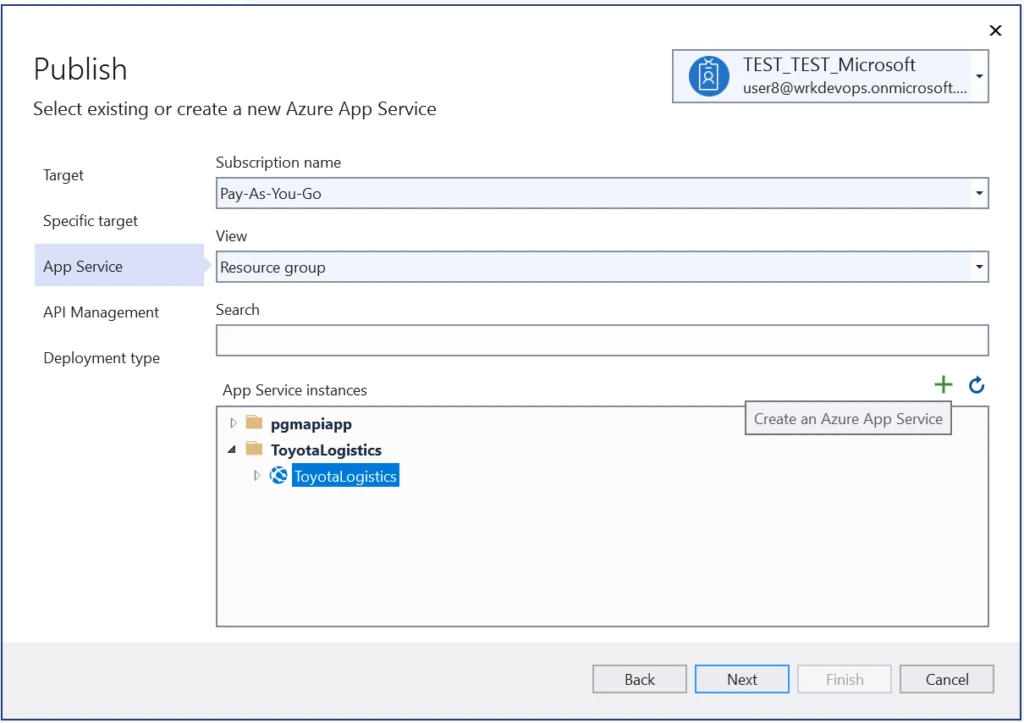

Publishing the API and registering the API in API Management from Visual Studio.
Once the API is registered in the API Management catalog, a developer can then export the API to Microsoft Power Platform as an API Management connector with only a few clicks.


Publishing the API from Management to Microsoft Power Platform.

This now allows citizen developers to easily access their own company data when creating Microsoft Power Platform apps and flows.
Similarly, we have expanded this capability to also include Azure Functions, allowing developers to build serverless functions and have them be consumed via API Management in Microsoft Power Platform.
Using the Visual Studio 2019 preview edition, developers within Visual Studio can author their Azure Functions, and publish them directly into Azure, where developers are also able to register their Functions in API Management without leaving Visual Studio.


Publishing Azure Functions and registering in API Management from within Visual Studio.
Once the API is published and registered in API Management, the API can be exported as a connector to Microsoft Power Platform and consumed by apps and flows with ease.



Using the Azure Function as Custom Connector in Microsoft Power Platform Applications.
We are constantly looking at ways to make citizen and pro developers collaborate in a frictionless way, without leaving their authoring environments. You can download Visual Studio 2019 build 16.10 to try out these API publishing capabilities in June.
Visual Studio Code extension for Power Apps portals development
We are pleased to announce the new Visual Studio Code extension for Power Apps portals which adds the capability to configure portals using Visual Studio Code, and utilize the built-in Liquid language IntelliSense enabling help with code completion, assistance and hinting while customizing portals interface using Visual Studio Code. Using the Visual Studio Code extension, you can also configure portals through the portal’s support for Power Apps CLI. This extension will be available for preview in June.

When customizing downloaded content using VS Code, you can now use IntelliSense for Power Apps portals liquid tags.

To use Power Apps CLI commands, use Visual Studio Code and the integrated terminal.
New Microsoft Power Platform application lifecycle management accelerators
With the Center of Excellence (CoE) Starter Kit, we are empowering pro and citizen developers alike to participate in application lifecycle management (ALM) and accelerate the process with out-of-the-box Azure DevOps pipelines and GitHub workflow templates. The accelerators will be open source and available at the new CoE Starter Kit GitHub repository. An overview of the accelerators is available here.


New canvas app for developers and advanced makers familiar with GitHub concepts and Azure DevOps will offer a convenient way to drive the dev loop. It allows developers to manage all Dataverse solutions in a single place, enables an easy approach to commit to Git branches, submit pull requests, and deploy specific builds to a dev environment while surfacing the status of those activities.

New canvas app for citizen developers will offer an easy approach to drive their portion of DevOps by viewing and managing source code on GitHub and community contributions. Once a project is created and approved, a dashboard allows users to view projects and navigate to the maker portal to build and create assets under a newly created solution in just a few clicks. Makers can deploy their progress or finalized solution to a test and a production environment.
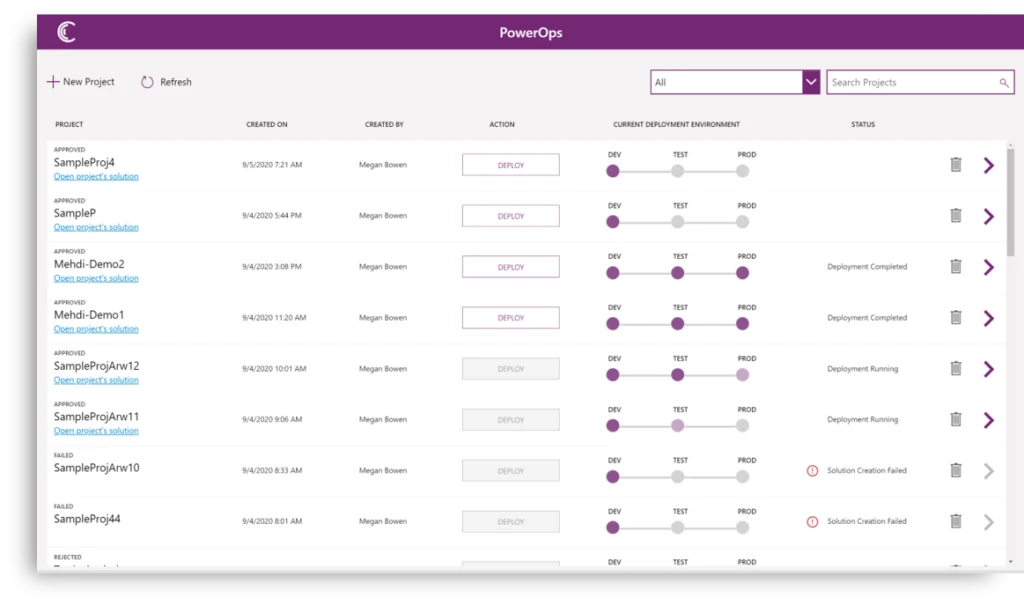
Open source on GitHub, with acceptance of community contributions, is coming soon. With an active backlog on GitHub, we are actively building new functionality and will start accepting changes from our community soon to make the toolkit better for all developers.
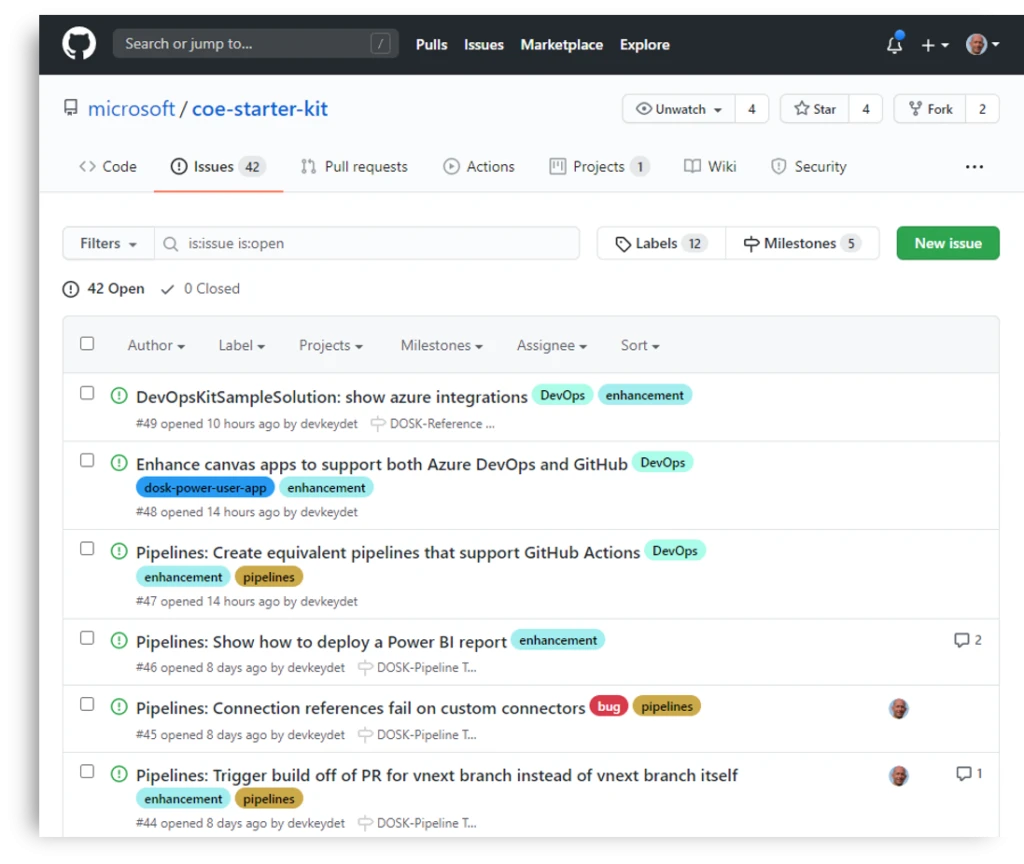
Anyone can deliver a certified connector for Microsoft Power Platform
We are excited to announce that you no longer need to own the API to submit a connector to Microsoft Power Platform for certification. Anyone who builds a connector will be able to submit it as an Independent Publisher connector in our GitHub repository under the independent-publisher-connector folder. You can also collaborate with others to add more functionality to existing independent publisher connectors. Independent publisher connectors will undergo the same validation process as premium connectors and will surface directly within Microsoft Power Platform products.

The publishers’ name will be featured in our product, monthly blog, and community calls. In the fall, we will allow Power Automate users to submit issues, reviews, and view telemetry directly within the product.

Have a custom connector in mind that you’d like to publish to our platform? Submit it this summer.
Add custom code to your custom connector
Connector developers will be able to submit C# code as part of their custom connector. Through custom code, developers can transform the request or response and proxy calls to a different endpoint instead of relying on a limited number of policy templates or hosting their own endpoints.
Stay tuned for this feature in the custom connector UI.
Developers of all types are using Microsoft Power Platform to deliver complex solutions, integrated with Azure services, in record time
Toyota Motor North America (TMNA) turns employee ideas into apps with Microsoft Power Platform. TMNA actively encourages employees to contribute to corporate innovation, and the company has given them access to Microsoft Power Platform for no-code and low-code development of business solutions. Employees have used Power Apps to create more than 400 apps that help with everything from product quality control to COVID-19 screening. TMNA has even extended Power Apps development with Microsoft Azure Cognitive Services and Azure Machine Learning to create an accessory installation app distributed in Microsoft Teams that uses Computer Vision to look at vehicles and determine whether they are equipped with the appropriate equipment and whether that equipment is in the desired condition. To manage all this development, TMNA created a Center of Excellence that trains and supports employee efforts, and the company maintains rigorous governance requirements for app development.

“From an innovation standpoint, we can use Power Apps to spec and build a solution and continuously improve it, rather than waiting for someone else to do the work.”—Christopher Hitt, Assistant Manager Field Technical Operations, Toyota
T-Mobile manages company-wide initiatives with Microsoft Power Platform. Successfully melding fusion teams and professional developers with a center of excellence and citizen developers can be a daunting task, but Brian Hodel at T-Mobile manages it with ease. Implementing a solution to manage cross-company initiatives for 200,000 employees in a business-critical app connected to Dataverse and Azure API Management, along with Azure Active Directory and Azure Application Insights, meant a high level of complexity. With more than 1,500 users and more than 6,500 projects managed in the app, it meant that T-Mobile had to quickly mobilize their professional developers, along with citizen developers to meet the demand. T-Mobile realized the value of a fusion team to quickly enable work they couldn’t have otherwise completed.

“On larger projects, I like to separate administrative functions out into other apps, especially if they are stopgap issues, until the new tool can be up and running. I like to use these opportunities to have a citizen developer work alongside me to both have a concept of how the new tool is built, but also to build the smaller solutions that I need for various roles. The nice part of this is that it helps with my bandwidth and gives them an opportunity to have coaching along the way to learn best practices and new methods.”—Brian Hodel, Senior Analyst, Business Systems, T-Mobile
When the COVID-19 pandemic hit, Ernst & Young (EY) saw an opportunity to help. As a provider of the Paycheck Protection Program (PPP) under the CARES act, EY was able to provide financial support for small businesses with the Microsoft Power Platform in just 12 weeks.
“We saw Microsoft Power Platform as an ideal way to address a complex, financial problem in a very short period of time.”—Anbu Anbarasu, Engineering Lead for Low Code Services, Client Technology, Ernst & Young
Blackmores Group speeds new product delivery with Microsoft Power Platform and Microsoft Azure. Realizing costly off-the-shelf options didn’t quite fit the company’s requirements, a Blackmores Group developer introduced Azure and Microsoft Power Platform to his team, and everything changed. Blackmores Group uses these tools to answer a variety of needs quickly, applying the approach—from no code to pro code—that best solves the problem. The company is not only realizing higher productivity; it’s also saving precious time in getting products to market faster.

“Our team treats Power Apps and Azure as one platform that we use to build our solutions…. Our ability to extend Microsoft Power Platform with Azure gives us the confidence to use it for complex projects like Project Lucky.”—Tijn Tacke, Head of Business Applications, Blackmores Group
Learn more
- Sign up for the upcoming Microsoft Power Platform Build overview webinar.
- Watch the on-demand low-code application development webinar.
- Watch the on-demand Microsoft Power Platform and GitHub webinar.
- Watch the on-demand webinar to extend SAP with Microsoft Power Platform.
- Learn more about how Power Apps and Azure are better together.
- Learn about low-code application development with Azure and Power Apps.
- Determine your value using Microsoft Power Platform and Azure with our Forrester TEI report.
- Azure API Management connector on Microsoft Power Platform.
- Introducing Microsoft Power Fx: the low-code programming language for everyone.
- Reshape the future of work with Microsoft Dataverse for Teams.
- Fusion development learning path gets your team skilled and certified quickly.
- Download the Fusion development e-book for in-depth learning.
- Microsoft Power Platform developer plan to learn and build solutions as a Microsoft 365 developer.
- Watch the on-demand Microsoft Power Platform ALM and ALM accelerators overview.
- If you’re new to Azure, you can create your free Azure account today—get started with 12 months of free services and Azure credits.

